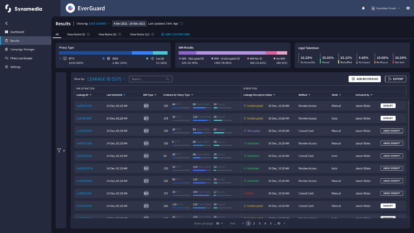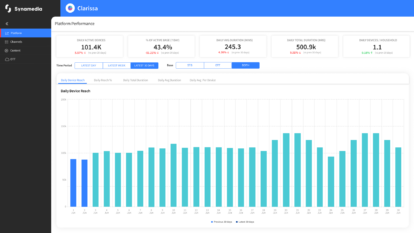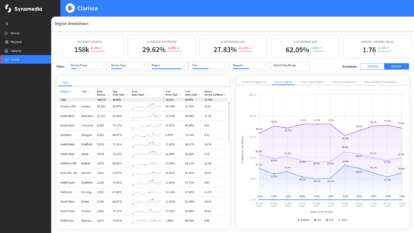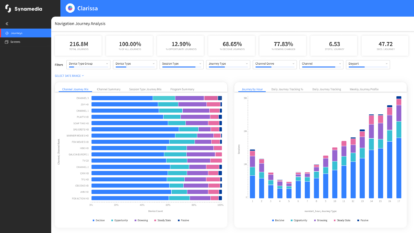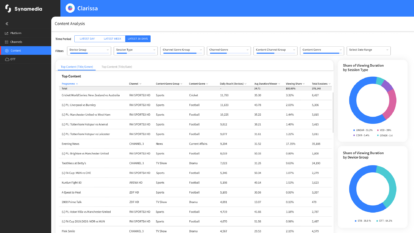1.3+ million households to benefit from low latency, crystal clear sports broadcasting
LONDON – 11 October 2022 – Synamedia, the world’s largest independent video software provider, today announced that SportsMax, the most widely distributed and watched sports channel in the Caribbean, has deployed Synamedia’s Vivid PowerVu Workflow-as-a-Service (WaaS) offering, moving its distribution from on-premise to the cloud. The migration enables SportsMax to deliver best-in-class viewing experiences with premium picture quality, near-broadcast latency, superior distribution security, and greater flexibility.
SportsMax is the Caribbean’s premier broadcaster and rights owner of international sporting content such as the Olympic Games, NBA, La Liga, UEFA Champions & Europa Leagues, the Women’s Tennis Association Tour, the Ashes cricket, Indian cricket, the Caribbean Premier League T20 cricket, and athletics meets, among many others.
“Synamedia has brought everything we needed and wanted in a SaaS solution to the table from the maintenance of our servers, operating systems and software, 24/7 operational oversight and monitoring of our systems, along with the ongoing availability of the newest technologies,” said Newton Robertson, COO of SportsMax. “If you want to transition seamlessly to an IP-distribution model, securely and reliably, Synamedia is your answer. No one else could do what they did for us – they delivered a homerun in record time.”
SportsMax needed to update its broadcast distribution solution to deliver popular local leagues across the Caribbean region seamlessly. In a matter of days, Synamedia launched its Vivid distribution service in the cloud, replacing a legacy on-premise system with demonstrable ability to scale. In comparison, traditional hardware and on-premise solutions would have taken weeks or even months to launch.
By leveraging Synamedia’s Vivid PowerVu cloud-based distribution solution, SportsMax accelerated time to market, gained much greater infrastructure flexibility, and can now scale distribution instantly. Synamedia’s portfolio also enables the ability to continuously improve quality and efficiency, especially crucial as SportsMax’s business needs evolve.
According to Nick Meacham, CEO of SportsPro Media, “Sports channels are in a race to distribute content as quickly and as effectively as possible, all whilst maintaining a strong control of costs. With SaaS cloud-based technologies, sports broadcasters such as SportsMax are able to maintain the agility, flexibility and scalability they need to ensure their investment into sports rights is a successful one.”
“The trend we’re seeing with SportsMax and others in sports and broadcast distribution is the need to immediately and reliably deliver pin-sharp video quality with near-zero latency,” said Julien Signes, EVP and General Manager, Video Network at Synamedia. “We are thrilled to help SportsMax leverage the cloud so effectively and seamlessly, helping to reduce their TCO and providing an immediate solution to their business needs today and tomorrow.”
Synamedia will be displaying the full portfolio of Vivid WaaS solutions at NAB New York, 19-20 October 2022, including the Powervu WaaS solution deployed by SportsMax, alongside Vivid WaaS solutions for low latency streaming, compression, cloud DVR, and more. Synamedia will also showcase its ATSC 3.0 solutions, AI-based elastic CDN with Fluid EdgeCDN, and just-in-time streaming with Quortex.
For press and analyst queries, please contact:
Tracey Sheehy (US)
Rachel Postlethwaite (EMEA)
About Synamedia
We’re trusted by service providers and content owners to deliver, enrich, and protect video. The flexibility and agility of our cloud and SaaS products enable customers of all types and sizes to launch, monetise, and scale services at speed. Our award-winning portfolio includes advanced advertising, business analytics, broadband and streaming video platforms, intelligence-led anti-piracy, and video network cloud and software solutions. Synamedia is backed by the Permira funds and Sky.
Twitter: @SynamediaVideo
LinkedIn: Synamedia
